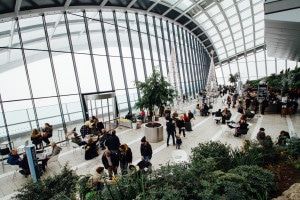Moving Your Business Doesn’t Need To Be Tricky. Here’s How

It is inevitable that most firms will have to relocate to a new office location at some point in their existence. Perhaps your firm is expanding and your current office space is no longer meeting your needs completely. Whatever the reasons are for your desire to relocate to new office space, you will want to make certain that everything goes off without a hitch.
The last thing you want is for your company’s operations to be affected for an extended period of time as a result of your relocation. Here, we look at how to make your office relocation a smooth and easy process.
Make a financial plan for the relocation
First and foremost, you should consider what kind of funds you want to set aside for the entire relocation process. It is generally not a good idea to enter into this without having the financial aspects of the transaction planned out in advance. Without exercising caution, it is certainly possible to lose a significant amount of money, which is something you do not want to happen. Establishing a budget can ensure that you do not suffer a financial setback or wind up spending more money than you had planned.
Make a thorough assessment of your space requirements
When looking for new office space for your company, one of the things you should consider is how much room you will need for your operations. Different types of businesses demand different amounts of space, based on the type of work they do and the number of individuals they have working for them. It is absolutely something that you will want to take into consideration if you want to make the best decision possible. The last thing you want to do is move into a room that is too small for your needs or spend money on a space that is larger than you require.
Consider the possibility of future changes
Not only should you think about the requirements of your company right now, but you should also consider how your requirements may evolve in the future. You do not want to fall into the trap of believing that your requirements will remain constant indefinitely. Perhaps you are considering a shift to a more remote work environment ; if this is the case, you may not require a large office space at all. Alternatively, you could want to hire additional employees next year; if this is the case, you will need more capacity to house them.
Find a reputable commercial moving company that has years of experience
The moving company that you pick to work with will be critical to your success. A lot of firms experience difficulties when it comes to successfully executing their relocation plans. There always appears to be some sort of situation that needs to be resolved that you have to deal with. However, having an experienced and dependable team of commercial movers on your side, such as the ones you would find when you click here , should make the entire process a lot less stressful than it would otherwise be for you. As a result, conduct thorough research and ensure that you hire the most qualified candidate.
Lastly, remember to keep sustainability in mind. Consider ways to reduce your impact on the environment by taking office energy requirements in mind.


